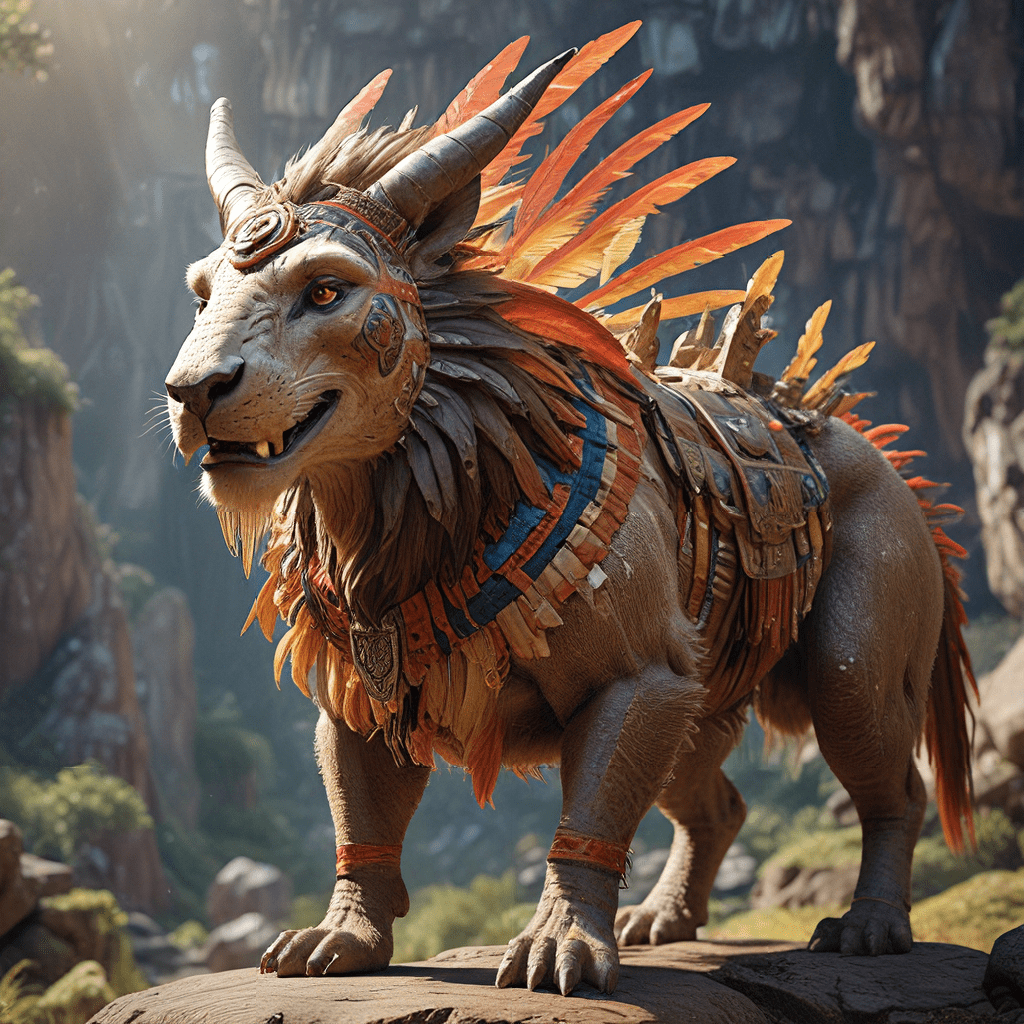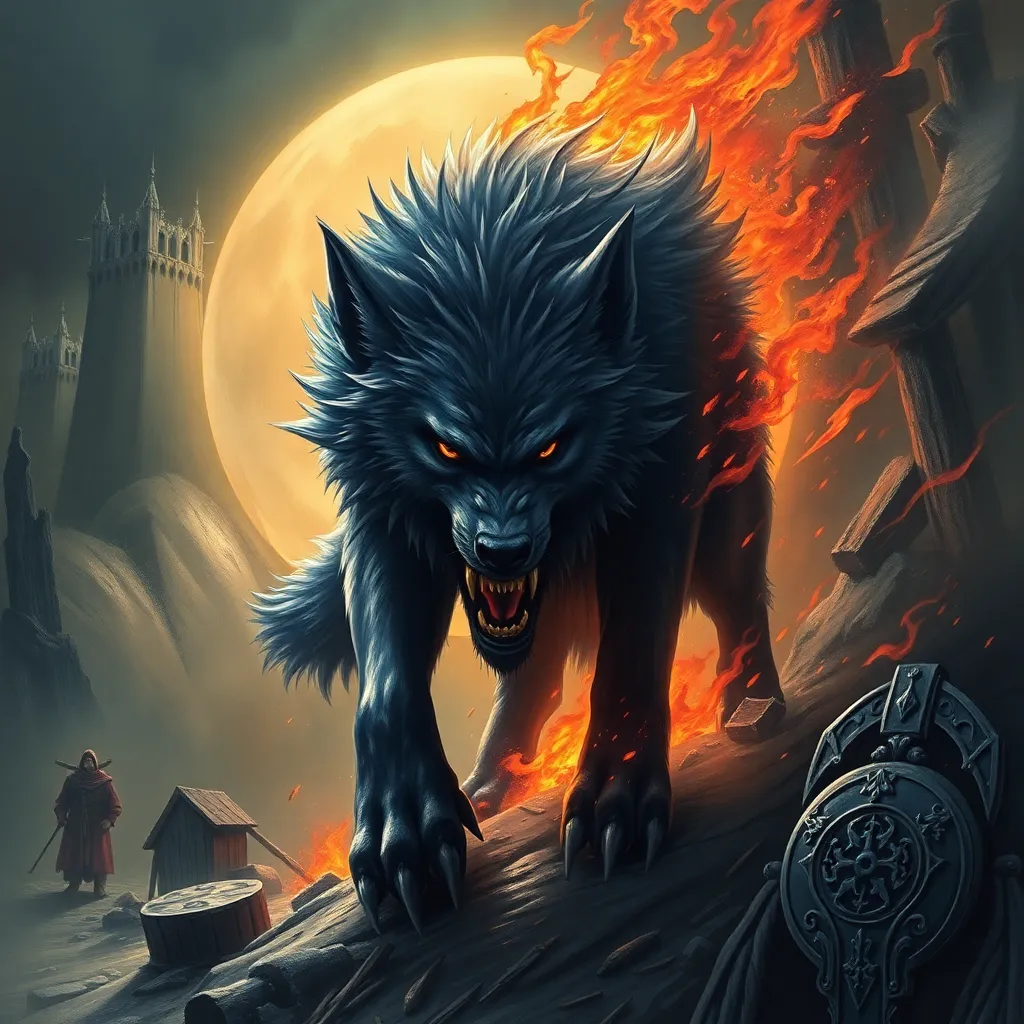Incan Mythical Beasts: Creatures of Legend and Lore
1. The Importance of Myth in Incan Culture:
The Incan civilization, which flourished in the Andes Mountains of South America from the 13th to the 16th centuries, was deeply rooted in a rich tapestry of myths and legends. These stories served as a vital means of transmitting knowledge, values, and history across generations. They provided explanations for natural phenomena, explored the intricacies of human relationships, and embodied the spiritual beliefs and moral codes of the Inca people.
Mythical creatures played a central role in these narratives, serving as powerful symbols that represented the forces of nature, deities, and societal concepts. They were not mere figments of imagination, but rather living embodiments of the interconnectedness of the physical and spiritual realms, reflecting the Incan worldview that saw the world as a place where humans, animals, and deities existed in a harmonious balance.
2. The Role of Animals in Incan Cosmology:
Incan cosmology, like many ancient belief systems, assigned profound significance to animals. The interconnectedness of humans and animals was a fundamental element of Incan thought, where animals were seen as possessing unique qualities that mirrored human virtues, vices, and spiritual potential. They were not simply creatures to be hunted or domesticated, but rather spiritual guides, messengers of the gods, and embodiments of the forces of nature.
Animals served as powerful symbols, embodying various aspects of the cosmos, including the sky, the earth, the underworld, and the elements of water and fire. Their characteristics, such as strength, agility, wisdom, and ferocity, were projected onto human individuals and societies, shaping social roles, hierarchies, and spiritual practices.
3. The Supay: Lord of the Underworld and Guardian of the Dead:
The Supay was a fearsome and enigmatic figure in Incan mythology, representing the lord of the underworld. He was the guardian of the dead, a powerful deity who ruled over the realm of shadows and darkness. Depicted as a grotesque figure with a twisted face, cloven hooves, and a whip made of human intestines, the Supay embodied the fear and uncertainty surrounding death and the afterlife.
The Supay was not simply a malevolent deity, but also a necessary part of the natural order, overseeing the transition of souls from this life to the next. He reminded the living of the impermanence of life and the importance of leading a virtuous existence to avoid his wrath.
4. The Amaru: The Serpent-God of Creation and Fertility:
The Amaru, a serpentine deity, held a prominent position in Incan mythology, representing the forces of creation, fertility, and the Earth itself. It was closely associated with the Earth, water, and the cycle of life, its sinuous form symbolizing the intertwined nature of these elements. The Amaru was often depicted as a serpent with a feathered head, reflecting its connection to both the terrestrial and celestial realms.
The Amaru played a significant role in agricultural rituals and fertility ceremonies. Inca farmers believed that the Amaru's presence in the earth nourished the crops, ensuring bountiful harvests. Its power was invoked in prayers and offerings to ensure the prosperity of the land and the well-being of the people.
5. The Condor: Symbol of Power, Majesty, and the High Mountains:
The condor, a majestic bird of prey that soared high above the Andean peaks, occupied a revered position in Incan mythology. Its ability to fly to great heights and its piercing vision made it a symbol of power, majesty, and connection to the divine realm. The condor was believed to be a messenger of the gods, carrying messages between the human world and the celestial realm.
Incan rulers were often associated with the condor, symbolizing their connection to the gods and their responsibility to lead the people. The condor was also an emblem of strength and courage, representing the Inca warrior spirit and their prowess in battle.
6. The Llama: Animal of Sacrifice and the Domestic Sphere:
The llama, a gentle and resilient animal native to the Andes Mountains, played a crucial role in Incan society, both in daily life and in spiritual practices. It was a vital source of food, wool, and transportation, making it an integral part of the Incan economy. The llama's importance extended beyond its practical uses, with a deep symbolic significance in Incan mythology.
Llamas were considered to be sacred animals, closely connected to the Earth, the underworld, and the forces of nature. They were often sacrificed in rituals to appease the gods, seeking blessings for good harvests, health, and prosperity. The llama's association with the Earth and its connection to the underworld made it a suitable offering to appease the spirits of the dead and ensure a peaceful afterlife.
In Incan mythology, llamas were often associated with the concept of sacrifice and the interconnectedness of humans and the natural world. Their willingness to serve humans, their resilience in harsh environments, and their gentle nature mirrored the values of Incan society.
7. The Puma: The Guardian of the Night, Strength, and Prowess:
The puma, a stealthy and powerful feline predator, held a significant place in Incan mythology, symbolizing strength, agility, and the forces of nature. Its nocturnal habits and association with darkness made it a creature of mystery and power, seen as a guardian of the night and a protector against evil spirits.
The puma was often depicted in Incan art and mythology as a fierce warrior, embodying the strength and courage of the Incan warrior elite. Its ability to stalk its prey with stealth and its relentless pursuit of its quarry made it a symbol of cunning and determination. The puma's association with the Incan warrior class reflected the importance of strength, agility, and prowess in Incan society.
The puma's connection to the forces of nature, its association with darkness, and its embodiment of strength and courage made it a powerful symbol in Incan mythology. It represented the wild, untamed aspects of the natural world, reminding the Inca people of the power and unpredictability of nature.
8. The Yacumama: The Water Serpent:
Yacumama, known as the "Mother of the Waters," was a powerful and enigmatic serpent deity in Incan mythology. She was a guardian of rivers, lakes, and other waterways, embodying the life-giving power of water and the fertility of the Earth. Yacumama was often depicted as a giant serpent, sometimes with a human head, adorned with precious stones and feathers. She was revered as a benevolent deity, offering protection and abundance to those who respected her. However, she could also unleash her wrath upon those who abused or polluted the waters.
The Yacumama's association with water made her a crucial figure in Incan agriculture, as water was essential for the growth of crops. She was also connected to the concept of fertility, symbolizing the abundance of life and the cycle of birth, death, and rebirth.
9. The Viracocha: The Creator God:
Viracocha was the supreme creator god in Incan mythology. He was believed to have emerged from Lake Titicaca, the sacred lake in the Andes Mountains, and created the world, the sun, the moon, and humanity. Viracocha was often depicted as a bearded man, wearing a long robe, and carrying a staff or scepter. He was a powerful and benevolent deity who was revered by the Inca people for his role in creating the world and ensuring its order.
Viracocha's creation of the world and humanity, as well as his role in establishing social order and laws, made him the supreme deity in the Incan pantheon. He was seen as the ultimate source of wisdom, power, and justice.
10. The Pachamama: The Earth Mother:
Pachamama, the "Earth Mother," was a revered deity in Incan mythology. She was believed to be the embodiment of the Earth itself, providing life and sustenance to all creatures. Pachamama was often depicted as a woman, wearing a colorful skirt and a headdress of flowers, symbolizing the abundance and beauty of the natural world. She was responsible for the fertility of the land, the growth of crops, and the well-being of all living things.
Incan people believed that Pachamama was a benevolent and nurturing deity, offering her blessings to those who honored her. However, she could also be vengeful towards those who disrespected her or abused the land. The Pachamama was a central figure in Incan rituals, with offerings of food, coca leaves, and other sacred objects being presented to her to ensure her favor and the continued prosperity of the land.
FAQ
**1. What was the purpose of myths and legends in Incan culture?**
The Incan people used myths and legends to explain natural phenomena, explore human relationships, and transmit knowledge, values, and history.
2. How did animals play a significant role in Incan cosmology?
Incan people believed that animals were more than just creatures; they were spiritual guides, messengers of the gods, and embodiments of natural forces.
3. What was the relationship between the Supay and the Incan people?
The Supay was a fearsome but necessary deity, reminding the living of death's inevitability and the importance of a virtuous life.
4. What made the Amaru a crucial figure in Incan mythology?
The Amaru was connected to creation, fertility, and the Earth itself, making it essential for agriculture and life cycles.
5. What symbolism did the condor hold in Incan culture?
The condor was a symbol of power, majesty, and a connection to the divine realm. It was also associated with Incan rulers and warriors.
6. What was the llama's role in Incan society and mythology?
Llamas were vital for daily life and were considered sacred animals connected to the Earth, the underworld, and sacrifice.
7. How was the puma viewed within Incan mythology?
The puma symbolized strength, agility, and the forces of nature. It was associated with the warrior class and the wild aspects of the world.
8. What was the significance of the Yacumama in Incan beliefs?
The Yacumama, the "Mother of the Waters," was a guardian of waterways and a symbol of fertility and abundance.
9. Why was Viracocha considered the supreme deity in Incan mythology?
Viracocha was the creator god, responsible for creating the world, humanity, and social order.
10. What role did Pachamama play in the lives of the Incan people?
Pachamama, the "Earth Mother," was a benevolent deity who provided life and sustenance. She was a central figure in rituals and agricultural practices.



